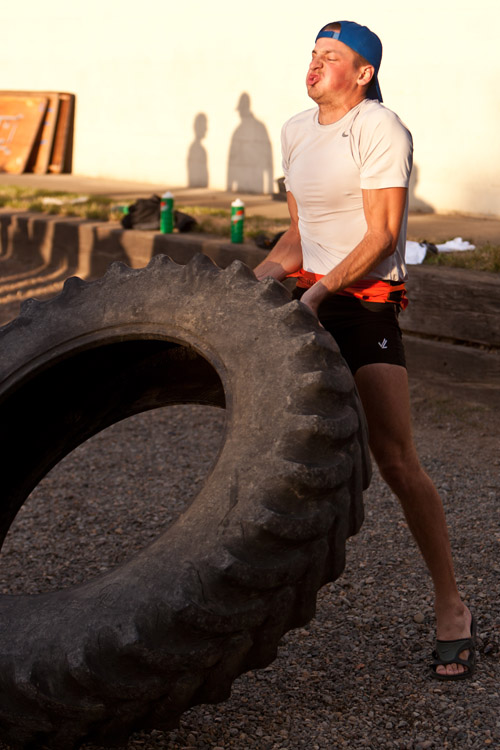Improving your rowing technique by changing from the ‘inside’ out
Bob Kaehler

Are you frustrated with your current rowing technique? Tired of hearing your coach make the same comments to you over and over again? You’ve been working hard to make the suggested changes, but feel like you’re getting nowhere. Over time, both you and your coach accept your ‘rowing flaws” as inherent and permanent limitations.
Or are they?
Have you considered the possibility that given your current tools ‘inside’, you may not be physically able to make the desired changes ‘outside?’
Experienced coaches are aware of proper technique -- how an athlete should look from an ‘outside’ perspective. When coaches observe that an athlete is struggling with proper technique, they use drills to help improve the athlete’s sequencing. If drills don’t work, then equipment is altered to help accommodate the corrections. And when this fails, the self-perpetuating cycle of frustration continues.
Having experienced this cycle, you may be wondering, what now? How can you break free of this cycle, improve your rowing technique, and finally move forward? I see many athletes -- junior through senior, and even elite level -- caught in this frustrating and often painful cycle. My advice to you is the same I have for them: change from the ‘inside’ out. Improve from the ‘inside,’ and improve your odds for achieving your athletic goals on the ‘outside.’
Some may argue that athletes have achieved considerable rowing success with poor posture and less-desirable technique; that it’s perfectly acceptable to continue coaching from the ‘outside’ only. From the perspective of a former elite athlete, strength and conditioning specialist, and physical therapist, I encourage you to think otherwise. Athletes who have trained under these circumstances (with less-than-optimal tools ‘inside’) have also had a long history of injuries. That’s a shame considering their injuries were avoidable in the first place had they identified and addressed their strength and flexibility deficits.
It’s important to be aware of your limitations ‘inside’ -- your strength, your flexibility, and any imbalances that exist with these systems -- and how they impact your rowing technique. Many issues can cause a breakdown in rowing technique. Sometimes a lack of mental focus can play a role. More often than not, however, athletes don’t have the physical tools in their current arsenal to make the necessary changes no matter how hard they focus. For this reason, coaches and athletes must understand the importance of assessing each individual to determine his or her own unique body balance deficits. Outside the things we can’t change -- limb and torso length and morphology -- the good news is that we can certainly improve strength and flexibility deficits once we identify them.
Armed with this knowledge, coaches can better understand potential roadblocks to proper technique, address them, and end the cycle of frustration. Both athletes and coaches will also appreciate the added benefits of reduced injury rates and prolonged racing seasons. Clearly the more positive and productive route to successful athletic careers.
An example of understanding body balance issues as they relate to rowing involves a female athlete I worked with recently. Rowing for a top prep school, this 3rd year rower had a PR of 7:52 when I started working with her. After working with her for just four and a half months, she improved her PR to 7:24.
During my initial assessment of her rowing technique on the erg, I observed great rowing flexibility, so no corrective exercises were required in that area. She also had good rowing posture. I did notice, however, that her shins were way past the vertical and her seat was hitting the back of her calves.
During her Body Balance evaluation, however, I found moderate weakness in her hamstrings, abdominal muscles, hip flexors, rhomboids, and paraspinal muscles. At that time, she wasn’t even able to get to a 90 degree position (thighs parallel to the ground) in the squat assessment.
All this to say, that while she looked good on the erg (aside from too much compression), she simply did not have the strength (‘inside’ tools) at the time, to generate power in her stroke. In fact, her excessive compression took her way past her ideal range of power.
As we improved her tools ‘inside’ by identifying and addressing her areas of weakness, her stroke moved back to the correct amount of compression (shortened by about 3” on the slide). As well, by the third month of working together, she was able to perform a full, deep squat without assistance. Changing her tools ‘inside,’ increased her power dramatically on the ‘outside.’ No heavy or even moderate weight lifting required. Just targeted, deficit-specific body balance exercises that ‘tightened’ up her system, and made it more efficient and powerful.
Bottom-line: improve your rowing technique by understanding your ‘inside’ -- strength and flexibility limitations -- and correcting them. Trying to improve technique without correcting these changeable issues limits your true potential for athletic success on the ‘outside.’ Addressing your deficits will also decrease your risk of injuries, and enable you to enjoy a longer, more fulfilling athletic career.
If you enjoy and rely on row2k, we need your help to be able to keep doing all this. Though row2k sometimes looks like a big, outside-funded operation, it mainly runs on enthusiasm and grit. Help us keep it coming, thank you! Learn more.
Comments | Log in to comment |
- Bont Rowing
- Calm Waters Rowing
- Concept 2
- Craftsbury Sculling
- The Crew Classic
- CrewLAB
- Croker
- Durham Boat Co.
- Empacher
- Faster Masters
- Filippi
- Fluidesign
- h2row.net
- HUDSON
- Live2Row Studios
- Nielsen-Kellerman
- Oak Ridge RA
- Peinert Boat Works
- Pocock Racing Shells
- Race1 USA
- RowKraft
- Rubini Jewelers
- Vespoli USA
- WinTech Racing
- Bont Rowing
- Calm Waters Rowing
- Concept 2
- Craftsbury Sculling
- The Crew Classic
- CrewLAB
- Croker
- Durham Boat Co.
- Empacher
- Faster Masters
- Filippi
- Fluidesign
- h2row.net
- HUDSON
- Live2Row Studios
- Nielsen-Kellerman
- Oak Ridge RA
- Peinert Boat Works
- Pocock Racing Shells
- Race1 USA
- RowKraft
- Rubini Jewelers
- Vespoli USA
- WinTech Racing


















10/01/2014 3:21:09 AM